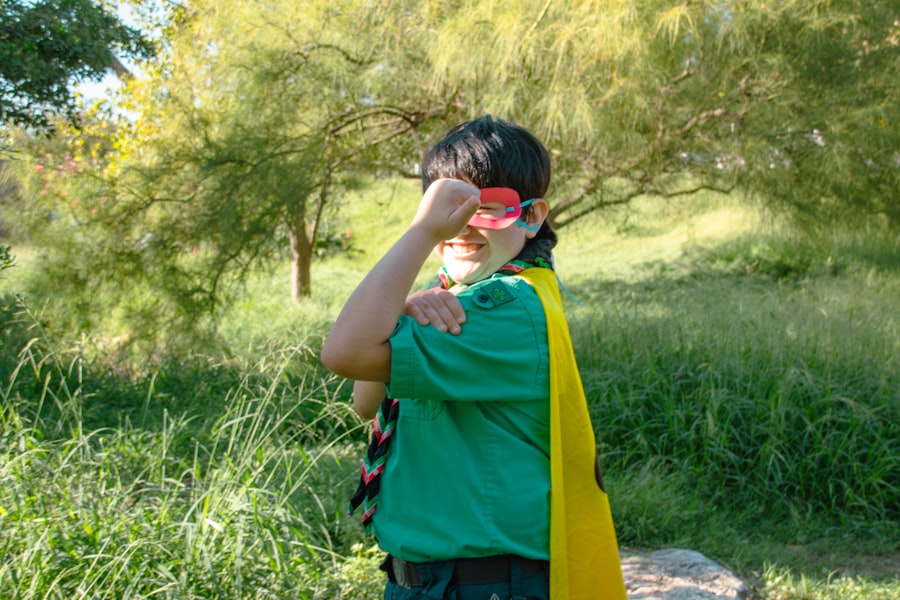The Cold War, a prolonged period of geopolitical tension between the Soviet Union and the United States, spanned from the end of World War II in 1945 until the dissolution of the Soviet Union in 1991. This era was characterized by a pervasive atmosphere of suspicion, where both superpowers engaged in a relentless struggle for ideological supremacy. The ideological divide between capitalism, championed by the United States, and communism, represented by the Soviet Union, fueled a series of proxy wars, arms races, and diplomatic standoffs.
The fear of nuclear annihilation loomed large, as both nations amassed vast arsenals of nuclear weapons, leading to a precarious balance of power known as Mutually Assured Destruction (MAD). During this time, the world witnessed not only military confrontations but also a battle for hearts and minds. Propaganda became a powerful tool, with each side attempting to portray the other as a threat to global peace and stability.
The Iron Curtain, a term popularized by Winston Churchill, symbolized the division of Europe and the broader world into two opposing camps. This division fostered an environment where trust was scarce, and every action was scrutinized through the lens of potential espionage. The Cold War was not merely a military conflict; it was a complex interplay of ideology, diplomacy, and covert operations that would shape international relations for decades to come.
Key Takeaways
- The Cold War was a period of intense tension and suspicion between the United States and the Soviet Union, leading to a global power struggle.
- Espionage played a crucial role in the Cold War, with both sides using spies and covert operations to gather intelligence and gain strategic advantage.
- Secret intelligence agencies such as the CIA and KGB were born out of the need for effective espionage during the Cold War, shaping the landscape of modern intelligence operations.
- Cold War spies utilized a variety of techniques and tools, including code-breaking, surveillance, and the use of double agents, to gather information and carry out covert missions.
- Famous Cold War spies like Aldrich Ames and Kim Philby had a significant impact on international relations, influencing diplomatic efforts and shaping the geopolitical landscape.
The Role of Espionage in the Cold War
Espionage emerged as a critical component of the Cold War, serving as both a means of gathering intelligence and a tool for psychological warfare. Both the United States and the Soviet Union recognized that understanding their adversary’s capabilities and intentions was paramount to maintaining an edge in this high-stakes rivalry. Intelligence agencies on both sides engaged in extensive surveillance operations, infiltrating each other’s political and military establishments to glean vital information.
The stakes were incredibly high; a single piece of intelligence could alter the course of history. The role of espionage extended beyond mere information gathering; it also involved disinformation campaigns designed to mislead and confuse the enemy. Each superpower sought to manipulate public perception and undermine confidence in the opposing regime.
This intricate web of deception added another layer to the already complex relationship between the two nations. Espionage became a game of wits, where success was measured not only by the quantity of information obtained but also by the ability to outmaneuver the opponent in a world rife with uncertainty.
The Birth of Secret Intelligence Agencies

The Cold War catalyzed the establishment and evolution of secret intelligence agencies that would become synonymous with espionage. In the United States, the Central Intelligence Agency (CIA) was formed in 1947, tasked with coordinating intelligence activities and conducting covert operations abroad. Its creation marked a significant shift in how the U.S.
approached national security, moving from a reactive stance to a proactive one. The CIA’s mandate included not only gathering intelligence but also engaging in psychological operations and supporting anti-communist movements worldwide. Conversely, the Soviet Union relied on its own intelligence apparatus, primarily the KGB (Committee for State Security), which played a crucial role in maintaining state security and suppressing dissent within its borders.
The KGB’s reach extended far beyond espionage; it was involved in counterintelligence, surveillance, and even assassination operations against perceived enemies of the state. The rivalry between these two agencies epitomized the broader conflict between their respective nations, as each sought to outsmart and outmaneuver the other in an ever-escalating game of espionage.
The Techniques and Tools of Cold War Spies
| Technique/Tool | Description |
|---|---|
| Microdots | Tiny photographs reduced to the size of a period at the end of a sentence, used to hide information. |
| Dead Drops | Secret locations used for the clandestine exchange of information or items between spies. |
| One-time Pad | An encryption technique using a random key that is only used once, making it extremely difficult to crack. |
| Invisible Ink | A type of ink that is invisible when applied to a surface, but can be revealed using a specific reagent. |
| Concealed Weapons | Spies often carried concealed weapons such as pistols or knives for self-defense or to carry out assassinations. |
Cold War spies employed a diverse array of techniques and tools to carry out their missions, often relying on ingenuity and creativity to overcome challenges. Traditional methods such as wiretapping and surveillance were complemented by more sophisticated approaches like signal intelligence (SIGINT) and human intelligence (HUMINT). Spies utilized hidden cameras, listening devices, and coded messages to gather information while minimizing detection risks.
The art of disguise became essential; operatives often assumed false identities or blended into local populations to evade scrutiny. Technological advancements during this period also played a pivotal role in espionage operations. The development of satellite reconnaissance allowed for unprecedented surveillance capabilities, enabling both superpowers to monitor military installations and troop movements from space.
Additionally, advancements in cryptography facilitated secure communication between agents and their home countries, ensuring that sensitive information remained protected from prying eyes. These tools not only enhanced operational effectiveness but also underscored the importance of technological superiority in the Cold War landscape.
Famous Cold War Spies and Their Operations
Numerous spies emerged during the Cold War, each leaving an indelible mark on history through their daring operations. One notable figure was Aldrich Ames, a CIA officer who turned traitor by providing classified information to the Soviet Union. His actions led to the exposure and execution of several American agents operating behind enemy lines, highlighting the devastating consequences of espionage gone awry.
Ames’s betrayal underscored the vulnerabilities within intelligence agencies and raised questions about loyalty and trust among operatives. Another prominent spy was Kim Philby, a British intelligence officer who was part of the infamous Cambridge Five—a group of spies who infiltrated British intelligence on behalf of the Soviet Union. Philby’s double life allowed him to provide critical information to Moscow while maintaining his position within British intelligence circles for years.
His eventual defection to the Soviet Union revealed not only his personal betrayal but also raised alarms about the extent of Soviet infiltration into Western intelligence agencies.
The Impact of Cold War Espionage on International Relations

The impact of Cold War espionage on international relations was profound and far-reaching. Intelligence operations often influenced diplomatic negotiations and shaped foreign policy decisions. For instance, revelations about Soviet missile installations in Cuba during the Cuban Missile Crisis heightened tensions between the two superpowers and brought them to the brink of nuclear war.
The intelligence gathered during this period played a crucial role in averting disaster but also underscored how espionage could escalate conflicts. Moreover, espionage fostered an environment of mistrust that permeated international relations throughout the Cold War era. Countries aligned with either superpower often found themselves embroiled in espionage activities against one another, leading to strained diplomatic ties and increased hostilities.
The fear of infiltration became pervasive; nations invested heavily in counterintelligence measures to protect their secrets from foreign adversaries. This cycle of suspicion perpetuated an atmosphere where cooperation was often overshadowed by paranoia.
The Legacy of Cold War Espionage in Modern Times
The legacy of Cold War espionage continues to resonate in contemporary international relations. Many of the intelligence agencies established during this period have evolved but remain integral to national security efforts worldwide. The lessons learned from Cold War espionage have informed modern practices in intelligence gathering, counterintelligence, and cybersecurity.
As technology continues to advance at an unprecedented pace, new challenges have emerged that echo those faced during the Cold War. Furthermore, the ethical implications surrounding espionage remain relevant today. As nations grapple with issues related to privacy, surveillance, and state-sponsored hacking, debates about the morality of espionage practices persist.
The Cold War era serves as a historical reference point for understanding how intelligence operations can impact civil liberties and individual rights in an increasingly interconnected world.
The Ethical and Moral Dilemmas of Espionage
Espionage inherently raises ethical and moral dilemmas that challenge both operatives and policymakers alike. The justification for spying often hinges on national security interests; however, this rationale can lead to actions that infringe upon individual rights or violate international norms. For instance, covert operations that involve assassination or sabotage can blur the lines between legitimate statecraft and unlawful aggression.
Moreover, the consequences of espionage extend beyond immediate tactical gains; they can have lasting repercussions on diplomatic relations and public perception.
This dynamic creates a complex moral landscape where intelligence agencies must navigate competing interests while grappling with the potential fallout from their actions.
The Technology and Innovation of Cold War Spying
The Cold War spurred remarkable technological innovations that transformed the landscape of espionage. As both superpowers sought to gain an advantage over one another, they invested heavily in research and development aimed at enhancing their intelligence capabilities. From advanced surveillance equipment to sophisticated encryption methods, technology became a cornerstone of espionage operations.
One notable advancement was the use of aerial reconnaissance aircraft like the U-2 spy plane, which provided invaluable intelligence on enemy installations from high altitudes. Additionally, satellite technology revolutionized surveillance by enabling real-time monitoring of military activities across vast distances. These innovations not only improved operational effectiveness but also set the stage for future developments in intelligence gathering that continue to shape modern espionage practices.
The Cat and Mouse Game of Counterintelligence
Counterintelligence emerged as a critical countermeasure during the Cold War as both superpowers sought to protect their secrets from infiltration by enemy spies. This cat-and-mouse game involved intricate strategies designed to detect and neutralize threats posed by foreign operatives. Intelligence agencies employed various tactics ranging from surveillance and infiltration to disinformation campaigns aimed at misleading adversaries.
The stakes were high; successful counterintelligence efforts could thwart espionage operations before they yielded damaging results. However, this constant vigilance also led to paranoia within intelligence communities, where accusations of betrayal or infiltration could create rifts among operatives. The psychological toll of this environment contributed to an atmosphere where trust was scarce, further complicating relationships within agencies tasked with safeguarding national security.
The Uncovering of Cold War Secrets: A Documentary Perspective
In recent years, historians and filmmakers have sought to uncover the secrets of Cold War espionage through documentaries that explore this fascinating yet shadowy world. These works often draw upon declassified documents, interviews with former operatives, and archival footage to provide insights into the clandestine activities that shaped global events during this tumultuous period. Documentaries serve not only as educational tools but also as vehicles for reflection on the ethical implications surrounding espionage practices.
By examining historical events through a contemporary lens, these films encourage audiences to grapple with questions about loyalty, betrayal, and the moral complexities inherent in state-sponsored spying. As new revelations continue to emerge from previously classified materials, the legacy of Cold War espionage remains an enduring subject of fascination for scholars and enthusiasts alike. In conclusion, the Cold War era was marked by an intricate tapestry of tension, suspicion, and covert operations that defined international relations for decades.
Espionage played a pivotal role in shaping this landscape, influencing diplomatic negotiations while raising ethical dilemmas that persist today. As technology continues to evolve and new challenges arise in global security dynamics, understanding the lessons learned from Cold War espionage remains essential for navigating contemporary issues related to intelligence gathering and national security.
In exploring the intricate world of Cold War espionage, one cannot overlook the fascinating insights provided by various documentaries that delve into the clandestine operations and intelligence battles of that era. A related article that complements these documentaries can be found on the website “In The War Room.” This article provides an in-depth analysis of the espionage tactics employed during the Cold War, shedding light on the covert operations that defined the period. For those interested in further exploring this topic, you can read more about it by visiting the article on In The War Room. This resource offers a comprehensive look at the strategies and stories that shaped the espionage landscape during one of the most tense periods in modern history.
WATCH THIS 🤯How the KGB Stole America’s Future
FAQs
What is the Cold War espionage documentary about?
The Cold War espionage documentary explores the covert operations, intelligence gathering, and spy tactics employed by the United States and the Soviet Union during the Cold War era.
What are some key events covered in the documentary?
The documentary may cover events such as the Cuban Missile Crisis, the construction of the Berlin Wall, the U-2 spy plane incident, and the activities of famous spies such as Aldrich Ames and Kim Philby.
What are some common themes in Cold War espionage documentaries?
Common themes in Cold War espionage documentaries include the ideological struggle between the US and the USSR, the use of technology for espionage, the impact of espionage on international relations, and the personal stories of spies and intelligence operatives.
Where can I watch Cold War espionage documentaries?
Cold War espionage documentaries may be available for streaming on platforms such as Netflix, Amazon Prime, or Hulu. They may also be available for purchase or rental on platforms like iTunes or Google Play.
Are there any real-life spies featured in Cold War espionage documentaries?
Yes, Cold War espionage documentaries often feature real-life spies such as Aldrich Ames, Kim Philby, Oleg Penkovsky, and Rudolf Abel, among others. These individuals played significant roles in the espionage activities of the Cold War era.




